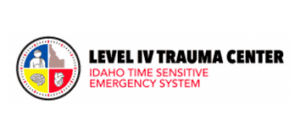By Kathy Hubbard
Everyone goes through phases of liking some foods and eschewing others. But there’s a big difference between being a picky eater and having an eating disorder. Since the earlier an eating disorder is detected, the better the chance for complete recovery, it’s important to know the warning signs.
The American Psychiatric Association describes eating disorders as “behavioral conditions characterized by severe and persistent disturbance in eating behaviors and associated distressing thoughts and emotions. They can be severe conditions affecting physical, psychological, and social function. Types of eating disorders include anorexia nervosa, bulimia nervosa, binge eating disorder, avoidant restrictive food intake disorder, other specified feeding and eating disorder, pica, and rumination disorder.”
Taken all together, these disorders affect up to five percent of the population. Often, they develop in adolescence and young adulthood. Several of them affect more females than males. Since I don’t have space to describe each disorder, we’ll focus today on what signs encompass most of them.
The National Eating Disorders Association (NEDA), who by the way have designated this week National Eating Disorder Awareness Week, says that this list isn’t intended to be a checklist. “Rather, these lists are intended as a general overview of the types of behaviors that may indicate a problem.”
Often throughout our lives our attitudes about the food we eat and our weight, whether high or low, may become our primary focus. NEDA says, “In general, behaviors and attitudes that indicate that weight loss, dieting, and control of food are becoming primary concerns,” may be the first warning sign of an eating disorder.
They say to watch for “preoccupation with weight, food, calories, carbohydrates, fat grams, and dieting; refusal to eat certain foods, progressing to restrictions against whole categories of food; appears uncomfortable eating around others; skipping meals or taking small portions of food at regular meals.”
We had a house guest last summer that I suspected may have an eating disorder. This person had what NEDA would call “food rituals.” He ate only a particular food or food group; he chewed to excess and didn’t allow foods to touch on his plate. He played with his food and constantly rearranged it on the plate. He also ate so slowly that we were ready for lunch before he finished his breakfast.
NEDA says to watch for new practices with food or fad diets, including cutting out entire food groups; withdrawal from usual friends and activities; frequent dieting; extreme concern with body size and shape; frequently checking in the mirror for perceived flaws in appearance, and extreme mood swings.
Those are the emotional and behavioral signs. As for physical signs, you should look for noticeable fluctuations in weight, both up and down; complaints about gastrointestinal issues or stomach cramps; menstrual irregularities, and difficulties concentrating.
Add to the list dizziness, especially on standing; fainting; feeling cold; sleep problems; dry skin, hair, or nails; muscle weakness, and impaired immune functioning. But these aren’t all of them.
Blood work might reveal anemia, low thyroid and hormone levels, low potassium, and low white and red blood cell counts. And a trip to the dentist may find enamel erosion, cavities, and tooth sensitivity.
The National Alliance on Mental Illness explains that “eating disorders are very complex conditions, and scientists are still learning about the causes. Although eating disorders all have food and weight issues in common, most experts now believe that eating disorders are caused by people attempting to cope with overwhelming feelings and painful emotions by controlling food. Unfortunately, this will eventually damage a person’s physical and emotional health, self-esteem, and sense of control.”
They list four main factors that may be involved with an eating disorder. Genetics is the first. “People with first-degree relatives, siblings or parents with an eating disorder appear to be more at risk of developing an eating disorder too.”
Then it’s environmental when cultural pressure idealizes certain body types, followed by peer pressure that may include teasing or bullying or sexual abuse, and, of course, emotional health. “Perfectionism, impulsive behavior, and difficult relationships can all contribute to lowering a person’s self-esteem and make them vulnerable to an eating disorder,” NAMI says.
Bonner General Health Behavioral Health Clinic can be reached at 208-265-1090.
Kathy Hubbard is a member of the Bonner General Health Foundation Advisory Council. She can be reached at [email protected].









